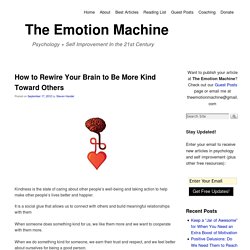

Calmness. To be or to know. Harmonic symmetry. Prejudice. The Story of My Experiments with Truth. The Story of My Experiments with Truth or સત્યના પ્રયોગો અથવા આત્મકથા is the autobiography of Mohandas K.

Gandhi, covering his life from early childhood through to 1921. It was written in weekly instalments and published in his journal Navjivan from 1925 to 1929. Its English translation also appeared in installments in his other journal Young India.[1] It was initiated at the insistence of Swami Anand and other close co-workers of Gandhi, who encouraged him to explain the background of his public campaigns. In 1999, the book was designated as one of the "100 Best Spiritual Books of the 20th Century" by a committee of global spiritual and religious authorities.[2] Contents[edit] Translator's preface[edit] This section is written by Mahadev Desai who translated the book from Gujarati to English in 1940.
Introduction[edit] The introduction is written by Gandhi himself mentioning how he has resumed writing his autobiography at the insistence of Sjt. Part I[edit] Carol Dweck: The power of believing that you can improve. Kindness/Empathy. How Mindfulness Helps You See What's Missing (And Why You'd Want To) In Basic Mindfulness (the system of Mindfulness I teach) there’s a term called “Gone.”

Gone refers to any moment of partial or complete disappearance that you happen to notice. It’s as simple as that. If you notice a bird stop chirping, if you notice an itch become less itchy, if you notice a car pass by and disappear from view, you could call these events “Gone.” How to Rewire Your Brain to Be More Kind Toward Others. Kindness is the state of caring about other people’s well-being and taking action to help make other people’s lives better and happier.

It is a social glue that allows us to connect with others and build meaningful relationships with them When someone does something kind for us, we like them more and we want to cooperate with them more. When we do something kind for someone, we earn their trust and respect, and we feel better about ourselves for being a good person. Being Virtuous: Benjamin Franklin's 13 Virtues of Life. Benjamin Franklin's Virtuous Life: The Virtue of Humility. The Virtue of Moderation. Podcast: How to Invent an Authentic Life. Kaizen: Get a Little Better Each Day. » 12 Practical Steps for Learning to Go With the Flow.
“Life is a series of natural and spontaneous changes.

Don’t resist them – that only creates sorrow. Let reality be reality. Let things flow naturally forward in whatever way they like.” - Lao-Tzu Post written by Leo Babauta. Follow me on Twitter. No matter how much structure we create in our lives, no matter how many good habits we build, there will always be things that we cannot control — and if we let them, these things can be a huge source of anger, frustration and stress. The simple solution: learn to go with the flow. The 5 Best Ways to Build Resiliency. Growth Mindset.
Podcast: The Importance of a Growth Mindset. Podcast: Eastern Philosophy & Modern Life Lessons. Brain cells get tweaked 'on the go' Researchers from the MRC Centre for Developmental Neurobiology (MRC CDN) at the Institute of Psychiatry, Psychology & Neuroscience (IoPPN), King's College London, have discovered a new molecular 'switch' that controls the properties of neurons in response to changes in the activity of their neural network.

The findings, published in Science, suggest that the 'hardware' in our brain is tuneable and could have implications that go far beyond basic neuroscience -- from informing education policy to developing new therapies for neurological disorders such as epilepsy. Computers are often used as a metaphor for the brain, with logic boards and microprocessors representing neural circuits and neurons, respectively. While this analogy has served neuroscience well in the past, it is far from correct, according to the researchers from King's. Computers are often used as a metaphor for the brain, with logic boards and microprocessors representing neural circuits and neurons, respectively. New study: Does putting your feet up = power? (Medical Xpress)—A new set of studies by researchers at three universities led by University at Buffalo psychologist Lora E.

Park, PhD, has found that the previously assumed link between expansive body postures and power is not fixed, but depends on the type of posture enacted and people's cultural background. "Stand Tall, but Don't Put Your Feet Up: Universal and Culturally-Specific Effects of Expansive Postures on Power" is reported in the November 2013 issue of the Journal of Experimental Social Psychology (Vol. 49, Issue 5). Park's co-authors are Lindsey Streamer, UB doctoral student in social psychology; Li Huang, PhD, assistant professor of organizational behavior, INSEAD; and Adam Galinsky, Vikram S. Pandit Professor of Business, Columbia Business School. "In four studies," she says, "the effect of each posture on participants was evaluated in comparison to a constricted body posture (e.g., sitting with hands under thighs, standing with arms wrapped around one's body). How posture and gestures affect state of mind. Most people are aware of the mind-body connection—how your mental processes can affect your physical state.

If you feel frightened, your heart races. Being embarrassed can cause you to blush. When you think of something happy, you are likely to smile. Meditating may even lower your blood pressure. But what about the reverse—a body-mind connection? Accumulating research is revealing that body position, postures, gestures and facial expressions can indeed influence how you think, feel and even behave.
How to Stop Worrying Effective Immediately - HavingTime. Worry does not empty tomorrow of its sorrow.

It empties today of its strength. – Corrie Ten Boom I’m sure that I’m not the only one who occupies herself with pointless worrying. When I’m in the middle of it, it seems impossible to get a handle of the situation and turn things around. It’s like going downstream in a roaring mountain river in a canoe without a paddle… and the stream of worries just takes you down with no way of stopping. But it’s far from the truth. How the Brain Purges Bad Memories. The brain is extraordinarily good at alerting us to threats.

Loud noises, noxious smells, approaching predators: they all send electrical impulses buzzing down our sensory neurons, pinging our brain’s fear circuitry and, in some cases, causing us to fight or flee. The brain is also adept at knowing when an initially threatening or startling stimulus turns out to be harmless or resolved. But sometimes this system fails and unpleasant associations stick around, a malfunction thought to be at the root of post-traumatic stress disorder (PTSD).
New research has identified a neuronal circuit responsible for the brain’s ability to purge bad memories, findings that could have implications for treating PTSD and other anxiety disorders. Like most emotions, fear is neurologically complicated. The Science of Changing Behavior. Changing your behavior is hard.

Luckily, there is a scientifically proven way to do it that gives you the best chance of success. Anyone who is trying to change their behavior without understanding this science needs to stop, now. Train Your Brain To Let Go Of Habits – 10 Methods For Creating New Neural Pathways. When you understand how neural pathways are created in the brain, you get a front row seat for truly comprehending how to let go of habits. Neural pathways are like superhighways of nerve cells that transmit messages. You travel over the superhighway many times, and the pathway becomes more and more solid. Brain Balance Centers: total and utter neurobollocks. Masthead from the Brain Balance Center’s website.
“Clinically proven”, and oooh… “holistic”. Marvellous. Brain Balance Centers are a network (actually, to be precise, a network of franchises) of treatment centers spread across the United States, currently operating in 54 locations; most of the major US cities. They offer a treatment called the ‘Brain Balance Program’ that claims to be able to improve: Clothes and Self-Perception. How Our Thoughts Control Our DNA. By Bruce H. Lipton Ph.D Guest Writer for Wake Up World The common idea that DNA determines so much of who we are — not only our eye or hair color, for example, but also our addictions, disorders, or susceptibility to cancer — is a misconception. The Surprising Truth of Sufficiency.
We each have the choice in any setting to step back and let go of the mindset of scarcity. Once we let go of scarcity, we discover the surprising truth of sufficiency. By sufficiency, I don’t mean a quantity of anything. Sufficiency isn’t two steps up from poverty or one step short of abundance. It isn’t a measure of barely enough or more than enough. Hoe intelligente mensen blijven geloven in wat niet waar is. Waarover gaat de zelfdeterminatietheorie? How to Rewire Your Brain to Be More Kind Toward Others. Which Character Strengths Are Most Predictive of Well-Being? - Beautiful Minds - Scientific American Blog Network. Listen to your heart: Why your brain may give away how well you know yourself. 7 Practices for Peacemakers. The Science of Changing Behavior.